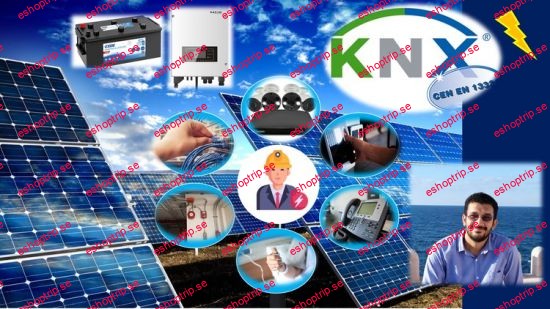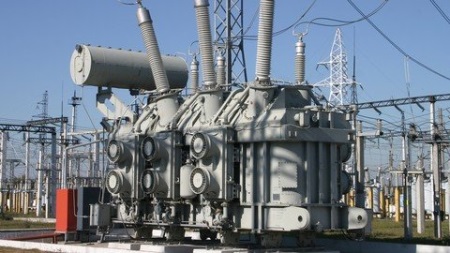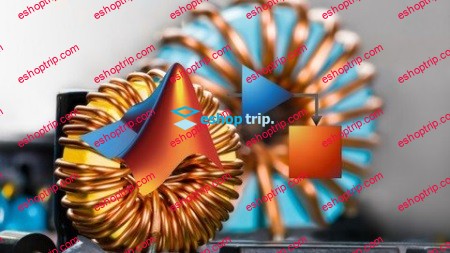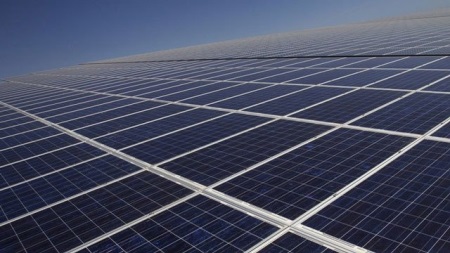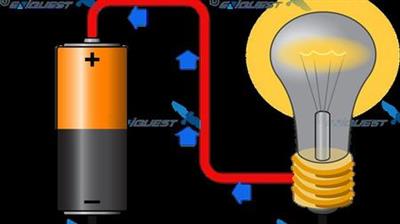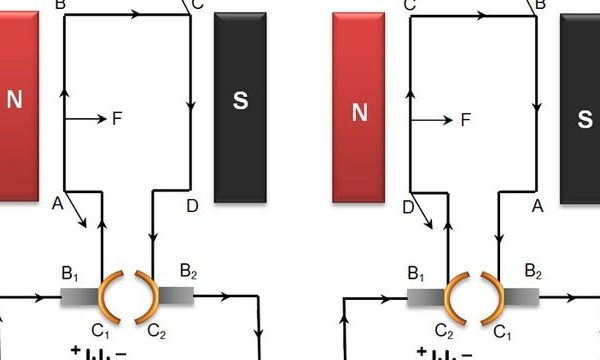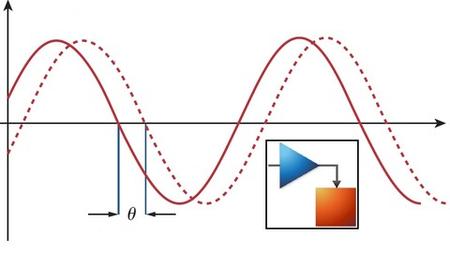Published 5/2024
MP4 | Video: h264, 1280×720 | Audio: AAC, 44.1 KHz, 2 Ch
Language: English | Duration: 7h 12m | Size: 4.37 GB
KNX system, (Fire alarm, Data network and Telephone systems, BMS, CCTV, MATV, ..etc) and Off grid PV solar system Design
What you’ll learn
you’ll have an overview about KNX system (definition, features of KNX system and its applications)
you’ll learn Basic components of KNX system (KNX power supply, sensors, actuators and KNX cables)
you’ll learn Wiring of KNX system and Basic structure of KNX system (Areas, lines, line coupler and Area coupler)
you’ll learn Media of data transfer for KNX system and Topologies of KNX system (T.P with ethernet backbone & T.P only)
you’ll learn Basic types of Actuators (switch actuator, universal dimmer actuator, 1to 10 V actuator and DALI Gateway)
you’ll have Practical videos for wiring of KNX system
you’ll learn Basics of electrical power system, C.B rating and Cable sizing
you’ll learn Definition, features and apps of solar energy
you’ll learn Types of solar Technologies (photovoltaic cells – STEG – Concentrated solar power) & Principle of operation for P.V cells
you’ll learn Types of Solar systems ( On-grid & Off-grid & Hybrid ) in details
you’ll learn Types of solar panels in details
you’ll have an overview about ( STC & NOCT ) in details & Characteristics of Solar panels including (I-V) curve
you’ll have an overview about Longitude and Latitude Concepts and their importance in solar system calculations
you’ll learn The Bypass and Blocking diodes and their purposes
you’ll learn Types of Solar Irradiation in details
you’ll have Discussion about Database of NASA for Solar Irradiation
you’ll discuss Basic Components for Off-grid Solar system in details (Solar panels – Charger controller – Batteries – Inverter)
you’ll discuss Steps of Designing for Off-grid Solar systems in details
you’ll discuss the Calculations of Off-grid Solar system in details with examples
you’ll have Practical videos for wiring and Installation of Off-grid Solar systems
you’ll have an overview about Fire alarm system including ( definition and main purposes )
you’ll learn Basic components of Fire alarm system, Types of detectors, Types of smoke detectors and their principle of operation (Ionization & Optical)
you’ll learn Distribution of smoke detectors according to (BS-5839 & NFPA)
you’ll learn (Duct smoke detector – Flame detector – gas detector) in details
you’ll learn Types of heat detectors and their principle of operation (Temperature Rise & Fixed temperature), Distribution of heat detectors according to (BS-5
you’ll learn Intelligent Multi-sensor fire detector (definition & places of apps), Distribution of Intelligent Multi-sensor fire detector according to (BS-5839)
you’ll learn Definition, types and principle of operation of beam smoke detectors, Distribution of beam smoke detectors according to (BS-5839)
you’ll learn Manual call points, types of alarms and (FACP & Types of fire alarm systems)
you’ll learn Complemental equipment of Fire alarm system (Door holder – Monitor module – control module – Isolator module – Tamper switch – Flow switch – ..etc)
you’ll learn Fire alarm (cables & Conduits), Structure of Fire alarm system ( Zones & Loops )
you’ll learn Definition, types of data networks ( LAN & WAN ) and Benefits of data network systems
you’ll learn Basic hardware components of Data network system also Data Network is divided into two Basic parts: Passive network & Switching part
you’ll learn Data cables in details ( Copper type & Optical fiber type ) , Types of Optical Fiber cables according to mode (single mode & Multi-mode)
you’ll learn Types of Optical Fiber cables according to places of apps: (1) Loose-tube Cable for Outdoor applications. (2) Tight buffered cable for Indoor apps
you’ll learn Standard number of Fiber cores inside the cladding, Basic components of Data network system in details
you’ll learn wiring of data network system, Definition and types of Telephone networks and Types of Telephone systems
you’ll learn Basic components of traditional Telephone system (Telephone outlet – TJB – IDF – MDF – PABX)
you’ll learn Telephone Cables, Components of (VOIP) and Wiring of all types of Telephone systems
you’ll learn Definition, benefits of BMS and Basic components of Old BMS: (Sensors – Actuators – DDC – BMS software – supervision display screens)
you’ll learn Basic components of Modern BMS: (Hardware components – Software – networking protocols)
you’ll learn Definition, Features, apps of Access Control System and its Basic parts (Input devices – Control devices – Monitor devices – control panel)
you’ll learn Basic components of Access control system (Access Cards – Access card readers – Door contact – Door lock -REX- Control panel – Management software)
you’ll learn Types of Access card readers (Contact reader – Contactless reader – Biometric reader)
you’ll learn Methods of Implementation for network Topology * Serial controllers * IP controllers
you’ll learn Definition, principle of operation of Queuing Management System and Basic components of Queuing Management System
you’ll learn Definition, features, apps of CCTV system and Types of CCTV systems (Analogue & IP)
you’ll learn Basic components of analogue CCTV system in details (Cameras – DVR – Monitors – Cables) & IP CCTV system in details including (VCA)
you’ll learn Types and specifications of Cameras
you’ll learn Important concepts like (Focal length – View angle – FOV – S/N – Image Resolution – TV lines – OZ – Digital zoom – BLC – AGC – HLC – POE)
you’ll learn Definition, features of MATV system and Types of MATV systems
you’ll learn Basic components of MATV system (Antenna – Head unit – Tap – Splitter – Amplifier – Separator – IF distribution – LNB – Multi switch)
you’ll learn Steps of Designing for MATV system
you’ll learn Definition, features, Basic components of Nurse calling system in details and Principle of operation for Nurse calling system
you’ll learn Steps of Designing for Nurse calling system
you’ll learn Definition, features, apps of Master clock system and Basic components of Master clock system
you’ll learn Wiring of Master clock system
you’ll learn Definition, features, pps of Sound system and Basic components of Sound system in details (Microphones – Amplifier – Loud speakers – sound Mixer)
you’ll learn important concepts like (Sound reflection – Feedback – ECHO – Time of reverberation – Resonance – Sound absorption)
you’ll learn Steps of Designing for Sound system
Requirements
Having some pretty simple basics of electricity.
passion and determination to learn be at its highest level !!!!
Description
Hello guys in Our Course you will learn All the required information to take your first steps at 3 Tracks
(1) KNX system (Design & Implementation) (2) Light current systems with a lot of details (Design &
wiring) (3) PV Solar systems (Design & Installation)
Taking this course will give students a much better understanding for these 3 tracks which they will face in the real life whatever as Facility or maintenance engineer, PV Solar Designer or site engineer at construction sector .
This course is structured in such a way that each section is dedicated to a specific topic in regards to these 3 tracks.
we have separated Lectures for Lab, so you can get the max benefit from this course.
Plan of Our Course will be like that
1- section (1) : ( KNX system Design )
– Overview about KNX system (definition, features of KNX system and its applications)
– Basic components of KNX system (KNX power supply, sensors, actuators and KNX cables)
– Wiring of KNX system
– Basic structure of KNX system (Areas, lines, line coupler and Area coupler)
– Media of data transfer for KNX system
* Twisted pair cabling (TP)
* Powerline Cabling (PL)
* Internet Protocol (IP) using Ethernet cabling
* Wireless Network system (WNS) using Radio Frequency RF
– Topologies of KNX system ( T.P with ethernet backbone & T.P only)
– Basic types of Actuators (switch actuator, universal dimmer actuator, 1to 10 V actuator and DALI
Gateway)
– Practical videos for wiring of KNX system
2- section (2) : ( Fire alarm system )
– Overview about Fire alarm system including ( definition and main purposes )
– Basic components of Fire alarm system
– Types of detectors
– Types of smoke detectors and their principle of operation (Ionization & Optical)
– Distribution of smoke detectors according to (BS-5839 & NFPA)
– (Duct smoke detector – Flame detector – gas detector) in details
– Types of heat detectors and their principle of operation (Temperature Rise & Fixed temperature)
– Distribution of heat detectors according to (BS-5839 & NFPA)
– Intelligent Multi-sensor fire detector ( definition & places of apps)
– Distribution of Intelligent Multi-sensor fire detector according to (BS-5839 & NFPA)
– Definition, types and principle of operation of beam smoke detectors
– Distribution of beam smoke detectors according to (BS-5839)
– Manual call points and types of alarms
– FACP & Types of fire alarm systems
– Complemental equipment for Fire alarm system (Door holder – Monitor module – control module –
Isolator module – Tamper switch – Flow switch – ..etc)
– Fire alarm cables and Conduits
– Structure of Fire alarm system ( Zones & Loops )
3- section (3) : ( Data network system & Telephone system )
– Definition and types of data networks ( LAN & WAN )
– Benefits of data network systems
– Basic hardware components of Data network system
– Data Network is divided into two Basic parts: Passive network & Switching part
– Data cables in details ( Copper type & Optical fiber type )
– Types of Optical Fiber cables according to mode (single mode & Multi-mode)
– Types of Optical Fiber cables according to places of applications
– Loose-tube Cable for Outdoor applications.
– Tight buffered cable for Indoor applications.
– Standard number of Fiber cores inside the cladding
– Basic components of Data network system in details
– wiring of data network system
– Definition and types of Telephone networks
– Types of Telephone systems
– Basic components of traditional Telephone system (Telephone outlet – TJB – IDF – MDF – PABX)
– Telephone Cables
– Components of (VOIP)
– Wiring of all types of Telephone systems
4- section (4) : (BMS Building Management system & Access control system & Queuing Management
system)
– Definition and benefits of BMS
– Basic components of Old BMS
(Sensors – Actuators – DDC – BMS software – supervision display screens)
– Basic components of Modern BMS
(Hardware components – Software – networking protocols)
– Definition, Features and apps of Access Control System
– Basic parts of Access control system
* Input devices
* Control devices
* Monitor devices
* Control panel
– Basic components of Access control system (Access Cards – Access card readers – Door contact –
Door lock – REX – Control panel – Management software)
– Types of Access card readers (Contact reader – Contactless reader – Biometric reader)
– Methods of Implementation for network Topology
* Serial controllers
* IP controllers
– Definition and principle of operation of Queuing Management System
– Basic components of Queuing Management System
5- section (5) : ( CCTV system & MATV system & Nurse calling system )
– Definition, features and apps of CCTV system
– Types of CCTV systems (Analogue & IP)
– Basic components of analogue CCTV system in details (Cameras – DVR – Monitors – Cables)
– IP CCTV system in details including (VCA)
– Types and specifications of Cameras
– Important concepts like (Focal length – View angle – FOV – S/N – Image Resolution – TV lines – OZ
– Digital zoom – BLC – AGC – HLC – POE)
– Definition and features of MATV system
– Types of MATV systems
– Basic components of MATV system (Antenna – Head unit – Tap – Splitter – Amplifier – Separator –
IF distribution – LNB – Multi switch)
– Steps of Designing for MATV system
– Definition and features of Nurse calling system
– Basic components of Nurse calling system in details
– Principle of operation for Nurse calling system
– Steps of Designing for Nurse calling system
6- section (6) : ( Master clock system & Sound system )
– Definition, features and apps of Master clock system
– Basic components of Master clock system
– Wiring of Master clock system
– Definition, features and apps of Sound system
– Basic components of Sound system in details (Microphones – Amplifier – Loud speakers –
sound Mixer)
– Important concepts like (Sound reflection – Feedback – ECHO – Time of reverberation –
Resonance – Sound absorption)
– Steps of Designing for Sound system
7- section (7) : ( Photovoltaic (PV) Solar systems Design )
– Basics of electrical power system
– C.B rating & Cable sizing
– Definition, features and apps of solar energy
– Types of solar Technologies (photovoltaic cells – STEG – Concentrated solar power)
– Principle of operation for P.V cells
– Types of Solar systems ( On-grid & Off-grid & Hybrid ) in details
– Types of solar panels in details
– ( STC & NOCT ) in details
– Characteristics of Solar panels including (I-V) curve
– Longitude and Latitude Concepts and their importance in solar system calculations
– The Bypass and Blocking diodes and their purposes
– Types of Solar Irradiation in details
– Discussion Database of NASA for Solar Irradiation
– Basic Components for Off-grid Solar system in details (Solar panels – Charger controller – Batteries
Inverter)
– Steps of Designing for Off-grid Solar systems
– Calculations of Off-grid Solar system in details with examples
– Practical videos for wiring and Installation of Off-grid Solar systems
** Our help in ” Power Tech Academy ” is always available to you if you get stuck or have a question !!!
our support is legendary in Udemy
–> So don’t hesitate and click ” Buy Now ” button so you can begin on the right path!
Who this course is for
PV solar systems Designers and site engineers
Electrical engineers, technicians and Students of Engineering
All who work in the smart home Automation
Maintenance engineers & Facility management engineers
All who work in the Construction field
Homepage
https://www.udemy.com/course/knx-light-current-systems-and-pv-solar-systems-design/
